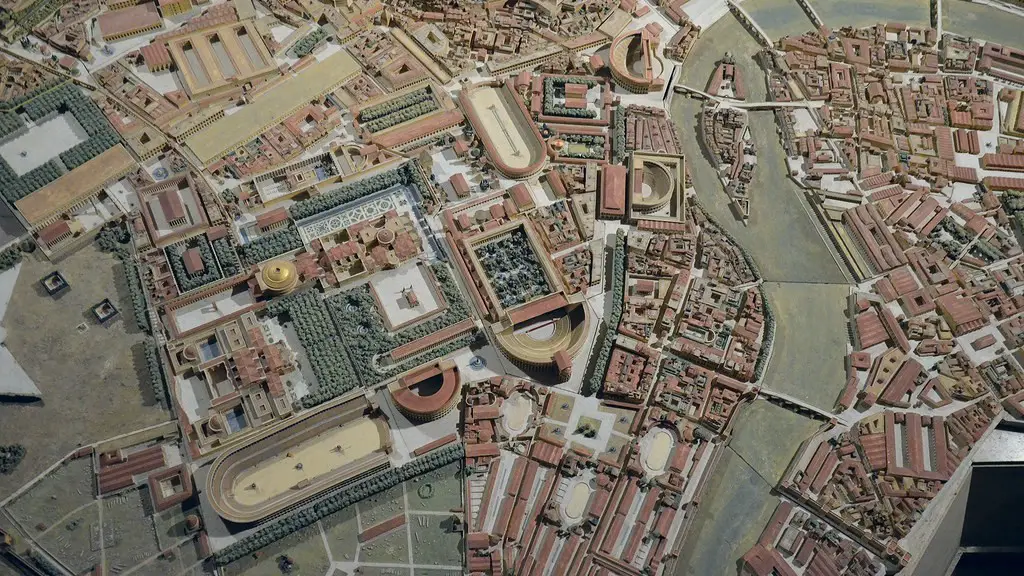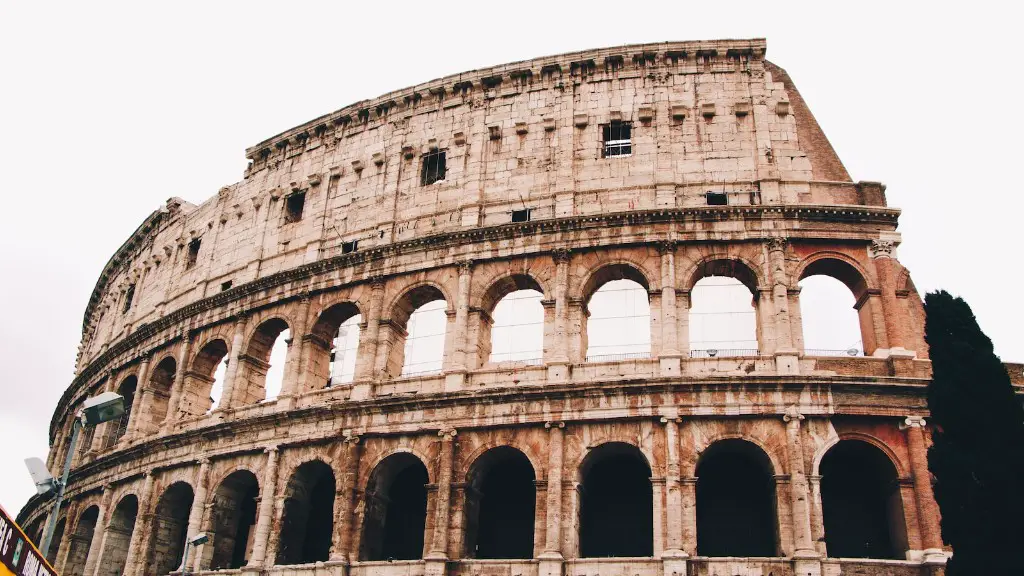The fall of the Roman Empire is a complex and much-debated topic. There is no one singular event or cause that can be pinpointed as the primary reason for the Empire’s decline. However, many historians agree that the growing influence of barbarian tribes was a major factor in the Empire’s downfall.
The Roman Empire was once a vast and powerful empire that ruled over a large portion of the world. However, over time, the Empire began to decline. Many factors contributed to this decline, but one of the most significant was the growing influence of barbarian tribes.
The barbarians were a collection of various tribes who lived outside of Roman territory. These tribes were often in conflict with the Roman Empire, and as the Empire’s power declined, the barbarians became more and more powerful. In the end, the Empire fell to the barbarian invaders, who sacked and destroyed much of Rome.
The fall of the Roman Empire was a complex and multi-faceted event. While the growing influence of barbarian tribes was certainly a major contributing factor, it was by no means the only reason for the Empire’s decline.
The Roman Empire fell in the 5th century because of a number of factors, including government corruption, invasions by barbarian tribes, overpopulation, and economic problems. The barbarian invasions were a major factor in the Empire’s fall, as the barbarian tribes destroyed Roman cities and caused widespread chaos. The Roman government was unable to effectively respond to the invasions, and the Empire eventually collapsed.
How was Rome defeated by barbarians?
The Germanic and other tribes who crossed the Rhine in 406-407 were doing so in order to escape the Huns. They were successful in reaching as far as Spain, and Alaric, king of the Visigoths, sacked Rome in 410. This event signaled the beginning of the end of the Western Empire.
The empire had never isolated itself from the Germanic peoples they called barbarians, recruiting them as soldiers for the Roman army and developing commercial and diplomatic ties with their leaders. From the time of Julius Caesar, barbarians had been deployed to protect the Roman frontiers.
When did Rome fall to the barbarians
476 CE was a pivotal year in the history of the Roman Empire. Romulus, the last emperor in the west, was overthrown by the Germanic leader Odoacer. This event marked the end of the Roman Empire in the west and the beginning of the Barbarian period. The order that the Roman Empire had brought to western Europe for 1000 years was no more.
The ‘barbarian invasion’ of the Roman Empire refers to the period of time when various barbarian groups entered into the political landscape of the empire. These groups eventually went on to form their own kingdoms, which replaced the Western Roman Empire. The ‘barbarian invasion’ thus marks the end of the Roman Empire.
Did the barbarians destroy Rome?
The Vandals were likely no more violent or destructive than their contemporaries. While the Vandals did sack Rome in AD 455, they spared most of the city’s inhabitants and didn’t burn down its buildings. This is in contrast to the reputation that the Vandals have gained in modern times.
The Romans had always been a people who looked down on those they considered to be “barbarians”. They believed that the lands these barbarians inhabited – such as Scotland and Germany – were largely unsuitable for civilization. The reason for this belief was that these lands were too cold and wet for the kind of Mediterranean agriculture that the Romans were accustomed to.
What were barbarians known for?
The term “barbaric” is often used to describe an act that is brutal, cruel, and savage. A “barbarian” is someone who commits such acts or displays such characteristics.
The Romans were very successful in their early years in fighting off barbarian attacks and even managing to conquer some barbarian tribes. However, as time went on, the barbarian tribes became more organized and better equipped, and the Romans had more difficulty in repelling them. In some cases, the Romans were even able to integrate some of the barbarians into their empire. However, in other cases, the barbarians were successful in defeating the Romans and even sacked the city of Rome, which marks the end of the Western Roman Empire.
What are 3 reasons for the fall of Rome
The fall of the Roman Empire was a gradual process that was caused by many factors. Political instability played a role in the decline, as did economic and social problems. Additionally, the weakening of the frontier or border contributed to the fall.
The “barbarians” who entered Gaul in 406 AD were not looking to destroy the Roman Empire, but rather to take advantage of its wealth. However, the Empire was already in decline and soon fell apart altogether. The Romans were unable to stop the “barbarians” from settling in Gaul, which led to the decline of the Roman Empire.
When did Rome fall and why?
The Visigoths were a Germanic people who sacked Rome in 410. This caused the fall of the Western Roman Empire. The last Roman emperor, Romulus Augustulus, was deposed by the German chieftain Odoacer in 476.
The Goths were a Germanic people who came from what is now Sweden. They were followed by the Vandals, the Burgundians, and the Gepidae. The Goths were known for their skill in warfare, and for their love of gambling and drinking. They were also known for their passionate beliefs, and their fierce loyalty to their friends and families.
What effect did the barbarian
The Byzantine empire was one of the most powerful empires in the world for centuries. However, in the late 4th and early 5th centuries, it was under assault by various barbarian tribes. While the western Roman empire collapsed under the pressure, the Byzantine empire was able to withstand the onslaught and preserve some of the great legacies of the Roman empire. This was due to a number of factors, such as the empire’s strong defences, its skilled military, and its ability to quickly adapt to changes.
Alaric I was a famous barbarian leader who rose to power after the death of the Eastern Roman Emperor Theodosius II in 395 AD. This event shattered a fragile peace between Rome and the Goths, and Alaric took advantage of the opportunity to lead his people in a successful invasion of the Eastern Roman Empire. Alaric’s sack of Rome in 410 AD was a turning point in the history of the Roman Empire, and he remains one of the most famous and infamous barbarian leaders to this day.
What caused Rome to decline and eventually fall?
As a result of the combination of severe inflation, barbarian invasions, debasement of the currency, civil wars, and destruction of farms, crops and cities, administrators were forced to get more taxes from people. This had a negative impact on the people, as they were already struggling with the aforementioned problems.
The Battle of Teutoburg Forest was a major victory for the Germanic tribes, who were able to stop the advance of the Roman Empire. This battle is seen as a turning point in history, as it dealt a major blow to Rome. The Roman Empire lost up to 20,000 soldiers in the battle, which effectively halted its advance across mainland Europe.
What did the barbarians want from Rome
In the 4th century, the Roman Empire was in a period of decline. This coincided with a time when many Germanic tribes were migrating and taking over Roman land. Some of these tribes, such as the Franks, Burgundians, and Vandals, were looking for better land on which to raise crops and farm animals. Others, such as the Goths, were fleeing from the Huns. Ultimately, these tribes transformed the face of the Roman Empire.
The term ‘barbarus’ was used by the Romans to refer to people who were uncivilized or in other words, not Greek or Roman. This term became increasingly common after the age of Augustus, when foreigners such as the Germanic peoples, Persians, Gauls and Phoenicians were increasingly seen as a threat to Roman civilization.
Conclusion
After centuries of rule, the Roman Empire fell in 476 AD. The primary reason for the Empire’s decline was its growing inability to defend its vast territory from barbarian invasions. The Roman military was simply not large enough to defend all of the Empire’s borders. In addition, the Empire was divided into two parts, the Western Roman Empire and the Eastern Roman Empire, which made it even more difficult to defend. As the barbarian invasions continued, the Western Roman Empire gradually fell apart. The last emperor of the Western Roman Empire, Romulus Augustus, was overthrown by a barbarian leader, Odoacer, in 476 AD. The Eastern Roman Empire, however, survived until 1453 AD.
There are many theories about how ancient Rome fell, but it is generally agreed that the invasions of the barbarian tribes played a role. The barbarian tribes were attracted to Rome by its wealth and power, and they slowly chipped away at the empire, weakening it until it was finally able to be conquered. The fall of Rome was a long and complex process, and the barbarian invasions were just one part of it.





